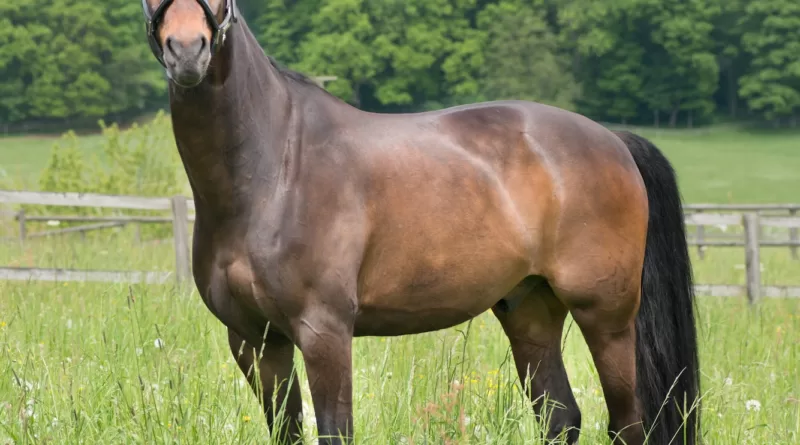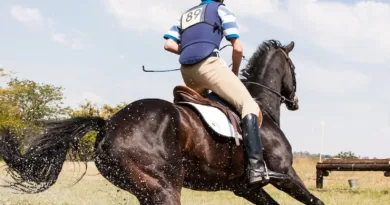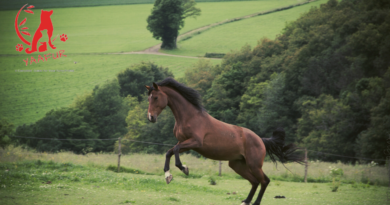How to Measure Horse for Blanket
Understanding the Importance of Proper Blanket Fit for Horses
Proper blanket fit is of utmost importance when it comes to the well-being and comfort of horses. A well-fitting blanket ensures that the horse is protected from extreme weather conditions, allowing them to stay warm in cold temperatures and dry in wet conditions. Additionally, a properly fitted blanket prevents rubbing and discomfort, reducing the risk of skin irritations and sores.
When a blanket is too loose, it can shift and slide, leaving parts of the horse’s body exposed to the elements. On the other hand, a blanket that is too tight can restrict the horse’s movement and cause discomfort. It is essential to find the right balance between a snug fit and the horse’s freedom to move naturally. By selecting a blanket that is tailored to the horse’s specific measurements and body shape, horse owners can ensure maximum comfort and protection for their equine companions.
Identifying the Correct Blanket Size for Your Horse
Determining the correct blanket size for your horse is essential to ensure their comfort and freedom of movement during the colder months. Ill-fitting blankets can cause discomfort, rubbing, and restrict your horse’s ability to walk and run naturally. To accurately identify the right blanket size, start by measuring your horse’s length, width, neck opening, shoulder and wither width, and drop length.
Measuring the length of your horse is the first step in determining the blanket size. Begin at the center of the chest and extend the measuring tape along the side of your horse to the point just before the tail starts. This measurement will help you determine the appropriate size range for your horse. Next, measure the width of your horse’s chest by starting at the center of one chest muscle and extending the measuring tape to the other side. These measurements will narrow down the size options for your horse’s blanket. Remember, it’s important to consider any additional factors such as your horse’s age, breed, and body condition, as these can also influence the blanket size needed for a proper fit.
Measuring the Length of Your Horse for the Perfect Blanket Fit
To ensure a perfect blanket fit for your horse, it is crucial to accurately measure the length of their body. This measurement determines the size of the blanket required to cover your horse adequately. To begin, position your horse on a level surface and stand at the side. Start measuring from the point between the center of your horse’s chest and the top of their withers. Then, extend the measuring tape along their spine leading up to the point where the tail starts. This measurement will provide a clear indication of the length of blanket needed for your horse.
It is important to note that the blanket should cover your horse’s entire back, from the withers to the tail, without being too short or excessively long. A blanket that is too short will cause discomfort and restrict your horse’s movement, leading to potential chafing or rubbing. Conversely, a blanket that is too long may result in your horse stepping on it or the excess fabric getting caught on objects, posing a safety risk. By accurately measuring the length of your horse, you can select the appropriate blanket size that will provide the best fit and protect your horse from the elements.
• Position your horse on a level surface and stand at the side.
• Start measuring from the point between the center of your horse’s chest and the top of their withers.
• Extend the measuring tape along their spine leading up to the point where the tail starts.
• This measurement will provide a clear indication of the length of blanket needed for your horse.
• The blanket should cover your horse’s entire back, from withers to tail, without being too short or excessively long.
• A too-short blanket can cause discomfort and restrict movement, potentially leading to chafing or rubbing.
• A too-long blanket may result in your horse stepping on it or getting caught on objects, posing a safety risk.
By accurately measuring your horse’s length, you can select an appropriate blanket size that provides comfort and protection while ensuring freedom of movement.
Determining the Right Blanket Width for Your Horse’s Chest
The width of the blanket plays a significant role in ensuring a proper fit for your horse’s chest. It is important to determine the right blanket width to provide comfort and freedom of movement. When measuring the width, position the tape measure at the center of the horse’s chest and extend it to the point where the blanket will end. This measurement will give you an accurate representation of the width required for a snug and secure fit.
It’s crucial to avoid a blanket that is too tight, as it can restrict your horse’s breathing and cause discomfort. On the other hand, a blanket that is too loose may slip and shift, causing potential injuries. Measure the width carefully and select a blanket that has adjustability in the chest area to accommodate your horse’s chest width. By ensuring the right blanket width for your horse’s chest, you’ll provide optimal comfort, freedom, and safety during chilly weather conditions.
Taking Measurements for the Neck Opening of the Blanket
When taking measurements for the neck opening of the blanket, it is essential to ensure a proper fit that is comfortable for your horse. Start by measuring the circumference of your horse’s neck at the widest point, just above the withers. Use a flexible measuring tape and make sure it is snug but not too tight. This measurement will help you determine the size of the neck opening that will best accommodate your horse.
Next, measure the distance from the base of your horse’s neck, where it meets the withers, to the point where you want the neck opening to sit. This will vary depending on your horse’s conformation and preference. Take this measurement along the crest of the neck, following its natural curve. Keep in mind that the neck opening should be neither too tight nor too loose, allowing your horse to move freely and comfortably. By accurately measuring the neck opening, you can ensure that your horse’s blanket fits properly and provides the necessary warmth and protection.
Ensuring the Correct Fit Around Your Horse’s Shoulders and Withers
The shoulders and withers are crucial areas to consider when ensuring a correct fit for your horse’s blanket. A well-fitting blanket should allow for freedom of movement in these areas without causing any discomfort or chafing. To achieve this, it is important to carefully measure your horse’s shoulder and wither width, as well as take note of any prominent withers or high-set shoulders.
When measuring the shoulder width, place the measuring tape across the widest part of the shoulder blades, ensuring it is snug but not too tight. Take note of this measurement as it will help you determine the appropriate blanket size. Additionally, pay attention to the wither height and shape, as some horses may have prominent withers that require special considerations. Ensure that the blanket provides ample room around the withers to avoid any pressure or rubbing.
Proper fit around the shoulders and withers is essential not only for your horse’s comfort but also to prevent potential injuries or soreness. Take the time to accurately measure these areas, and choose a blanket that accommodates the unique shape and movement of your horse. By doing so, you can ensure that your horse remains content and healthy throughout the wearing of the blanket.
Measuring the Drop Length for an Appropriate Blanket Fit
One essential aspect of achieving a proper blanket fit for your horse is determining the appropriate drop length. The drop length refers to the vertical measurement from the center of your horse’s back to the bottom edge of the blanket. This measurement is crucial in ensuring that the blanket provides adequate coverage and protection without hindering your horse’s movement.
To measure the drop length accurately, gently place one end of the measuring tape at the center of your horse’s back, just above the highest point of the withers. Allow the tape to hang freely down the side of your horse’s barrel, making sure it reaches the desired length for optimal coverage. Remember to account for any potential elasticity or stretching that may occur over time, as this could affect the drop length of the blanket. By finding the ideal drop length, you can protect your horse from the elements while allowing them to move comfortably and freely.
Assessing the Leg Straps and Surcingles for a Secure Blanket Fit
When assessing the leg straps and surcingle of your horse’s blanket, it is important to ensure a secure and comfortable fit. Leg straps are typically attached to the back of the blanket and loop under the horse’s hind legs, helping to prevent the blanket from slipping and sliding. It is crucial to adjust the leg straps so that they are snug enough to keep the blanket in place, but not so tight that they restrict your horse’s movement or cause discomfort. Regularly check the leg straps for any signs of wear and tear, as they may need to be replaced if they become frayed or damaged.
Surcingles, on the other hand, are adjustable straps that wrap around the horse’s belly, providing additional support and stability to the blanket. They are usually fastened using buckles or Velcro closures. When assessing the surcingles, make sure they are adjusted evenly on both sides and are neither too loose nor too tight. This will ensure that the blanket stays securely in place without causing any discomfort to your horse. Remember to periodically check the condition of the surcingles for any signs of stretching or damage, and replace them if necessary. A properly fitted blanket with well-adjusted leg straps and surcingles will not only keep your horse warm and protected but also allow freedom of movement.
Adjusting the Blanket for Your Horse’s Body Shape and Movement
Properly adjusting the blanket for your horse’s body shape and movement is essential to ensure comfort and freedom of movement. Every horse is unique, so it’s crucial to make necessary adjustments to achieve the best fit. Start by carefully observing your horse’s body shape and structure.
Consider the contour of your horse’s back and how it may affect the fit of the blanket. If your horse has a prominent wither, you may need to adjust the front closure to allow sufficient space and prevent rubbing. Similarly, if your horse has a broad shoulder, make sure the blanket is not too tight around that area, as it can restrict their movement. Regularly reassess and adjust the blanket as your horse’s body changes over time. Remember, a well-fitted blanket will allow your horse to move freely, ensuring their well-being and comfort throughout the day.
Tips for Maintaining a Properly Fitted Blanket for Your Horse
To ensure that your horse’s blanket maintains a proper fit, there are a few key tips to keep in mind. Firstly, regularly inspect the blanket for any signs of wear and tear. Look out for loose stitching, torn fabric, or any damaged hardware such as buckles or straps. Addressing these issues promptly will help to prevent further damage and ensure the blanket continues to provide the necessary coverage and protection.
In addition, it is important to clean the blanket regularly to keep it in good condition. Use a gentle detergent and follow the manufacturer’s instructions for cleaning. Avoid using harsh chemicals or bleach, as these can damage the fabric. After cleaning, be sure to thoroughly rinse and allow the blanket to dry completely before using it again. This will help to prevent any discomfort or irritation to your horse’s skin.
By following these simple tips, you can maintain a properly fitted blanket for your horse, ensuring their comfort and protection throughout the colder months. Regular inspection and cleaning will go a long way in prolonging the lifespan of the blanket and guaranteeing its effectiveness in keeping your horse warm and cozy.
Why is proper blanket fit important for horses?
Proper blanket fit is important for horses because it ensures their comfort, freedom of movement, and protection from the elements. Ill-fitting blankets can cause chafing, rubs, or restriction in movement.
How do I identify the correct blanket size for my horse?
To identify the correct blanket size for your horse, you should measure their length, width, neck opening, shoulder and wither fit, and drop length. These measurements will help you determine the appropriate size for your horse.
How do I measure the length of my horse for the perfect blanket fit?
To measure the length of your horse, start from the center of their chest and go all the way to the point of their buttocks. This will give you the accurate length measurement for the blanket.
How do I determine the right blanket width for my horse’s chest?
To determine the right blanket width for your horse’s chest, measure straight across their chest from one side to the other, just behind the withers. This will give you the appropriate width measurement for the blanket.
How do I take measurements for the neck opening of the blanket?
To take measurements for the neck opening of the blanket, measure around the widest part of your horse’s neck. Make sure to leave enough room for your horse to comfortably lower their head and graze.
How can I ensure the correct fit around my horse’s shoulders and withers?
To ensure the correct fit around your horse’s shoulders and withers, make sure the blanket allows for enough shoulder movement without rubbing or pinching. The blanket should also sit just below the withers without putting pressure on them.
How do I measure the drop length for an appropriate blanket fit?
To measure the drop length, start from the center of your horse’s chest and measure down to the point where you want the blanket to end. It is important to consider your horse’s body shape and movement when determining the drop length.
How should I assess the leg straps and surcingles for a secure blanket fit?
When assessing the leg straps and surcingles, make sure they are adjusted to a comfortable and secure fit. They should not be too loose or too tight, as this can cause discomfort or rubbing.
How can I adjust the blanket for my horse’s body shape and movement?
To adjust the blanket for your horse’s body shape and movement, make use of any adjustable features such as shoulder gussets, belly darts, or tail flaps. These adjustments will allow the blanket to conform better to your horse’s individual shape.
What are some tips for maintaining a properly fitted blanket for my horse?
Some tips for maintaining a properly fitted blanket for your horse include regularly checking the fit, ensuring that straps and closures are secure, removing the blanket for grooming and airing out, and making any necessary adjustments as your horse’s body changes throughout the season.




